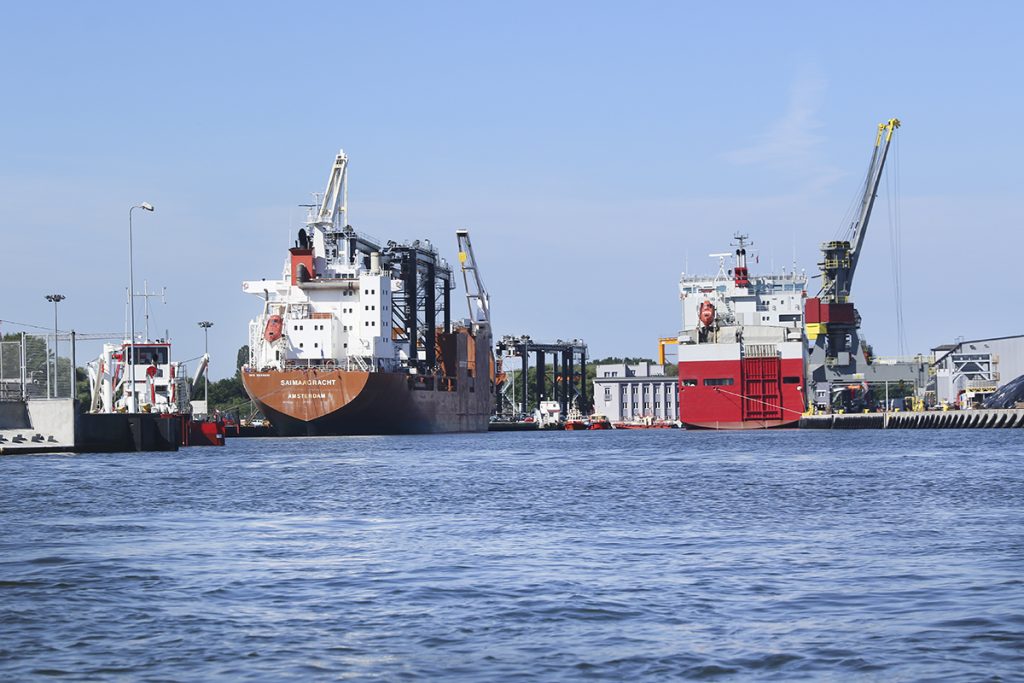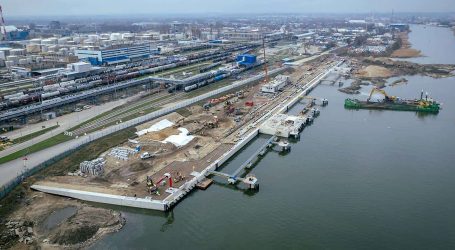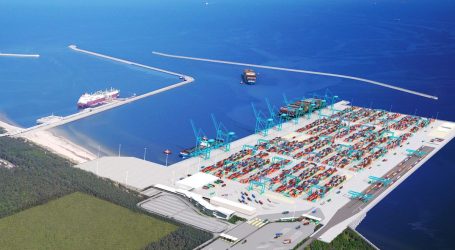Polish ports prepare for decarbonization of maritime transport

The decarbonization of maritime transport is gaining momentum. In October, the European Parliament completed work on two more legislative proposals that are part of the Ready for 55 package, a package of European Union climate regulations aimed at reducing greenhouse gas emissions in Europe by at least 55 percent by 2030.
We are talking about two pieces of legislation designed to enable a holistic energy transformation of maritime transport: the FuelEU Maritime Regulation on the use of renewable and low-carbon fuels in maritime transport, and the AFIR Regulation on the deployment of alternative fuel infrastructure.
The FuelEU Maritime regulation stipulates that greenhouse gas emissions from maritime transportation should be reduced by 2 percent by 2025, 20 percent by 2035 and 80 percent by 2050. The reduction obligations apply to ships over 5,000 gross tons and cover 100 percent of their intra-EU voyages and 50 percent of voyages between EU and third-country ports.
The AFIR regulation, on the other hand, provides guidelines for port infrastructure to enable ship operators to have sufficient access to shore power in TEN-T ports, i.e. to meet the obligations established by the FuelEU Maritime Regulation.
Polish seaports of primary importance to the national economy are also preparing their infrastructure for investments leading to decarbonization.
– With a view to taking measures aimed at reducing emissions and achieving the EU’s climate target by 2030 through climate neutrality, the Port of Gdansk Authority (ZMPG) is currently conducting an in-depth analysis of the possibility of implementing electric power supply for ships while at berth in the port Onshore Power Supply (OPS), says Anna Drozd, a spokesperson for the Port of Gdansk.
As she adds, on September 28 of this year, a contract was concluded between ZMPG SA and the Maritime University in Gdynia for the development of a document entitled “Analysis of the Implementation of the Onshore Power Supply System for Ships in the Port of Gdansk (…).”
– The analysis in question is the first step on the way to implementing OPS technology in the Port of Gdansk, and its conclusions will allow information to be obtained, among other things, in assessing the state of adaptation of marine vessels to power supply. The activities implemented by the Port are in line with the Strategy of the Port of Gdansk until 2030 and bring us closer to achieving the strategic goals set out therein,” emphasizes Anna Drozd.
In preparation for the implementation of future OPS solutions, ZMPG SA has secured infrastructure for the installation of the OPS power supply system as part of recently completed modernizations of selected quays.
– Some of the wharves modernized within the framework of the task entitled “Modernization of the waterway, expansion of wharves and improvement of navigation conditions in the inner port of Gdansk” have the so-called OPS-ready status. This means that it has a power conduit with adequate capacity to ensure readiness for the use of offshore power supply technology to supply electricity from the wharf to moored ships (offshore power supply) without interfering with their construction. Such a dedicated solution will also be created in the next modernized and newly constructed quays,” says Anna Drozd.
Port of Gdansk is currently seeking funding for a project titled “Improvement of the Port of Gdansk infrastructure with an analysis of the implementation of a low-carbon OPS system for sustainable development of the TEN-T network,” under the Connecting Europe Facility 2021-2027 (CEF 2). Within the framework of this project, a study task is also planned for the preparation of an “Analysis of the Implementation of the Onshore Power Supply (OPS) System for Ships in the Port of Gdansk.” The study is to include, among other things, an analysis of the status of the application of OPS systems for supplying ships with 100 kW of electricity while they are stationary in seaports; an assessment of the status of adaptation of marine vessels to shore power supply for vessels; and an assessment of the demand for ship power supply in the Port of Gdansk and recommendations for the implementation of this technology in the Port of Gdansk.
The results of the analysis will help determine the quantitative and qualitative parameters of the electrical power supply points for ships during berthing in the port, which will allow further design work and final implementation of OPS solutions in the Port of Gdansk. The call for proposals runs until January 18, 2023, and the results of the competition will be known in June 2023. Meanwhile, the planned implementation period for this investment is 2023-2027.
However, in the port of Swinoujscie, an investment is well advanced (85 percent), which will enable LNG fuel bunkering of ships from land via a vessel adapted for this purpose (the so-called bunker ship).
– Once the investment is completed, the refueling/bunkering process will take place in the port of Swinoujscie and in the roadstead, for ships awaiting unloading/loading. Of course, we are talking about a low-carbon solution. The fuel of the future in shipping will be ammonia because of its far better transport and volumetric capacity than H2, but for many years to come, the transition fuel will definitely be LNG. And this is already happening slowly before our eyes. TT Line is just introducing its second LNG-powered ferry (the first ferry was Niels Holgerson). PŻB, on the other hand, will also soon introduce two long-awaited vessels,” says Monika Woźniak-Lewandowska, communications and PR specialist at the Szczecin and Świnoujście Seaports Authority.
The aforementioned investment is scheduled for delivery in mid-2023.
The Public Ferry Terminal, used by Stena Line ferries, has been operating in the Port of Gdynia for several months. The advantage of the terminal, located at the Polish quay, is that it can be powered from land while ships are at berth, which lowers exhaust emissions and fits in with the idea of a “green port.”
Source: PortalMorski.pl / Sławomir Lewandowski



